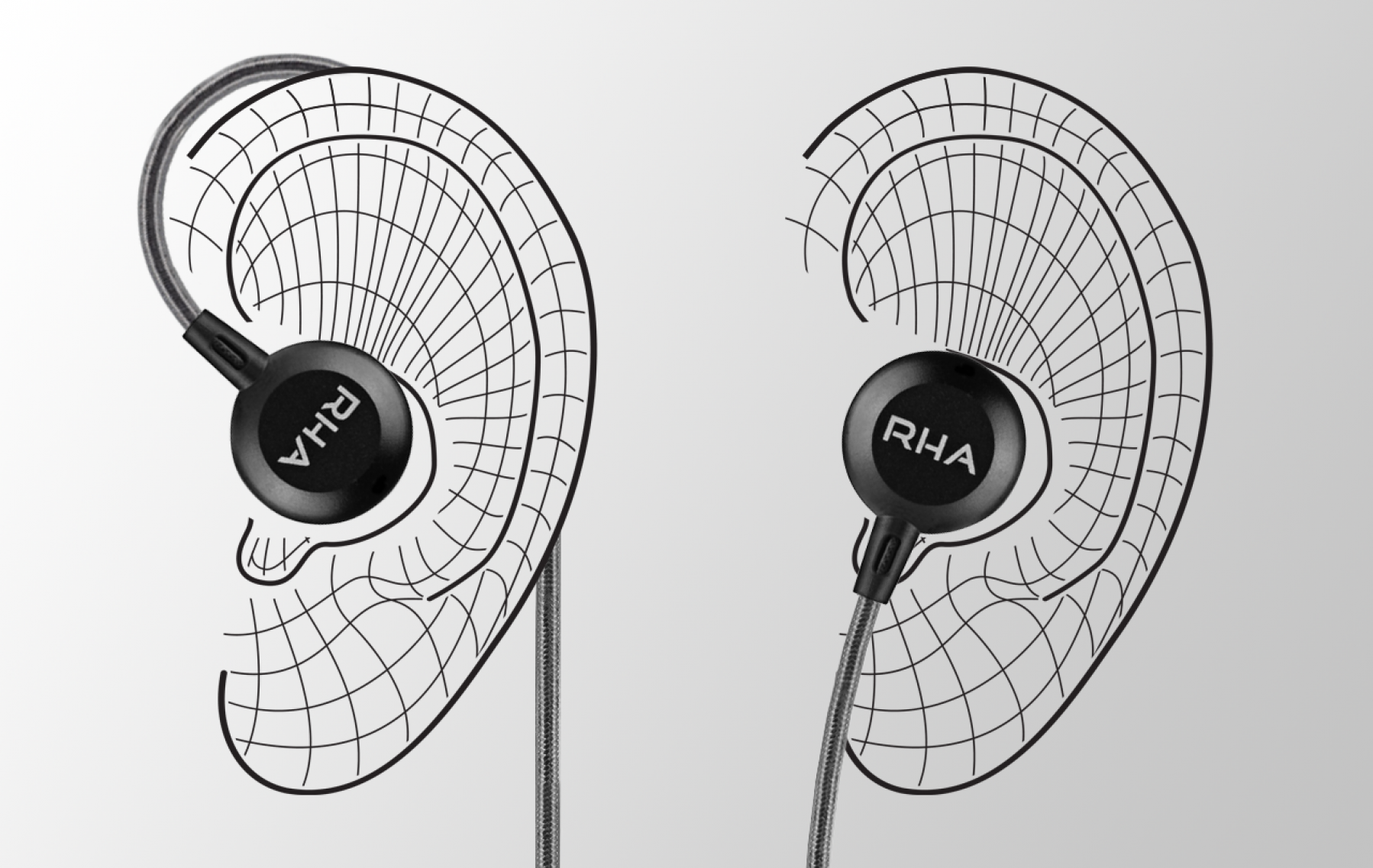Comfort
Obviously, making sure your headphones are comfortable is a top priority if you’re using them regularly, especially for extended periods of time.
Noise isolation
In addition to getting the right size ear tip, the way you wear your headphones can impact how effectively they block background noise. This is largely due to the angle at which the headphone’s sound pipe is positioned, and ensuring it matches with the angle of the ear canal.
Accurate sound reproduction
If a headphone doesn’t fit right, it won’t sound right. Working again in combination with the right size ear tip, getting the headphones in the right position to get a good seal within the ear canal is crucial to hearing your headphones properly!
Microphonics
The phenomenon that occurs when an in-ear headphone cable interacts with a user’s clothes or another material, causing vibrations to travel into the ear. Those who are particularly sensitive to the effect can combat it by adjusting their headphone wearing style.
With the importance of finding a headphone wearing style that’s suitable for you established, it’s time to look at the options you have in regards to RHA’s award-winning in-ear headphone range!
Conventional Fit
Applicable products: MA350, MA600, MA600i
The conventional fit is straightforward, with the headphones inserted, the cables hang straight down below the ears. For most people, this is the simplest wearing method, and if you’re using the the remote and microphone unit on the MA450i or MA600i, it’s also the most convenient, with the microphone unit appropriately positioned to pick up your every utterance when making calls or chatting to Siri.
Over-ear fit
Applicable products: MA350, MA600, MA600i, MA750, MA750i, T10, T10i
An over-ear fit has a number of benefits compared to the conventional wearing style. In addition to offering a greater degree of comfort for many users, an over-ear stye with the cable looped over and behind the ear can offer greater stability and reduced microphonics, with the contact points between the cable at the back and top of the ear acting as dampening for any vibrations that might travel up the cable from contact with clothing.
As the MA Series in-ear headphones are not angled, users of the MA350, MA600 and MA600i have the option to switch up their wearing style and can choose to turn the headphones upside down and loop the cable over and behind the ear. Though the RHA logo will be upside down and the remote and mic unit will be in a slightly less convenient position, the benefits of increased security and reduced microphonics make this wearing style ideal for wearing the headphones while active.
Due to their stainless steel construction, the MA750 and MA750i offer increased durability and improved sound quality compared to their MA Series compatriots, but they also weigh slightly more. The over-ear cable supports they feature are heat set in a non-rigid loop shape that compensates for this additional weight and ensures comfortable long term listening.
Finally, RHA’s flagship product takes over-ear wearing to a new level with a patent pending design of ear hook unlike any other. Due to their contoured, ergonomic shape the T10i’s can not be rotated in the ear, making it important for our engineers to develop a system of wearing style that would guarantee comfortable long term listening. The ear hook features a malleable steel wire alongside the copper cores, both of which are surrounded by a highly flexible steel spring. The combination of rigidity from the wire and flexibility of the spring creates an ear hook that can be adapted to any size or shape of ear imaginable with zero microphonic feedback and high levels of comfort.
How do you find the fit of your RHA headphones? Tell us on Twitter or Facebook!
